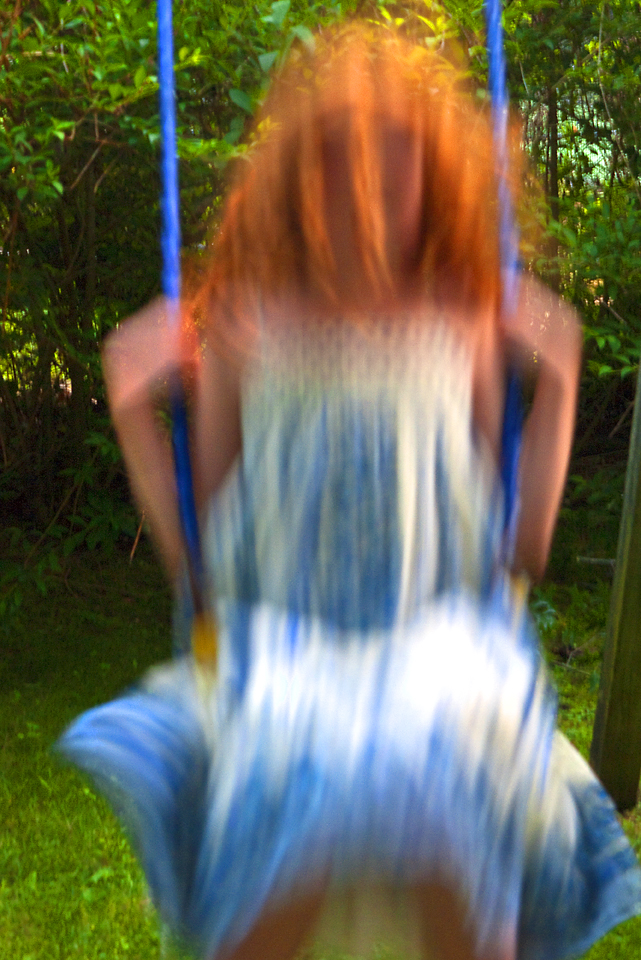Isabella on the Swing
I captured this image of my friend's daughter, Isabella, last week. I was sitting up on a deck overlooking the backyard where Isabella was just starting to pump herself higher and higher on the swing. For once, I actually had a camera at hand, and I scurried down in front of her. It was twilight, and I purposely avoided using a flash while I made this capture. I mean, how great is the blue rope, her blue dress, and of course, her blurred red hair?
More From My Little Friend
October light is amazing on the Eastern End of Long Island, especially on cloudless afternoons. The day before yesterday, around four o'clock in the afternoon, the sunlight was bouncing and jumping on the water outside. I walked around and captured a red spike plant against the shimmering reflection with my four thirds Panasonic Lumix and the funky little "c" mount Cooke cine lens opened wide up. I love the little green"dust" stuff on the spike leaf to the left, the squiggly light thingie at the top of the leaf,and the big white bokeh "bubbles" center top. It's almost as though you're looking up at the sun from under water.
Say Hello To My Little Friend
I'm just getting into four/thirds. So what's a four third? It's a digital camera format developed by Panasonic and also embraced by Olympus. I recently bought a used Panasonic G-1 with a 14mm-40mm lens on Ebay for next to nothing.It's a small interchangeable lens digital camera producing a 12 mp file. It's tiny compared to my Nikon D700. The image quality is fantastic. Four/thirds refers to the size of the sensor. Without sounding like a spokes person for Panasonic, let me say the really cool thing about this camera is its ability to use almost any existing 35mm format lens; i.e. Leica M's, Nikons AI, Canons, through the use of adapters. The thing to consider is that because the G-1 sensor is small, a regular 35mm focal length lens is twice the focal length value for the G-1. In other words a normal 35mm camera lens would be a 50mm; that lens on a G-1 becomes a telephoto 100mm. Having said that, I found a Taylor Hobson Cooke 25mm f 1.5 cine lens and mounting it on my G-1 with a "C" mount adapter, I started shaking hands with a potentially great little system.
Consider this image. The swirling bokeh effect is the Cooke lens opened all the way up. I made three different exposures, hand held, each with a 2 stop different EV. (The G-1 does this effortlessly with a quick settings adjustment.) The files were RAW file format, and after downloading them into my computer, I opened them up in PhotoMatrix and let that application work its digital magic. While I was still in PhotoMatrix, I performed some tonemapping, processed the file as a High Definition Range (HDR). Sounds like a long way to go. It's really not. (I resisted HDR for a long time as being too gimmicky: but I must admit I've fallen under its spell.)
I was in Manhattan for several days this past week, and I used my G-1 for some street shooting. The first image is a reflection in a Jim Polshek building, The Cornell Weill Medical Research building on the corner of 70th Street and York Avenue. It's a straight capture using the 14mm-40mm lens that came with the camera.
The second image is an unmanipulated capture of a standpipe. You have to love the reds against the black. I think the resolution is great. i can't wait to see where my little friend and I go.




